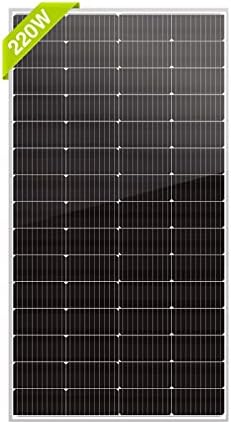# Harnessing the Sun: A Comprehensive Guide to Home Solar Panels
On a bright summer morning, I woke up to the sound of birds chirping outside my window. As I pulled back the curtains, golden rays of sunlight streamed in, illuminating my cozy living space. It was the perfect reminder of why I had taken the plunge into solar energy: to harness that wonderful, free power from the sun itself. The sun not only brightened my day but also empowered my home with renewable energy, allowing me to live sustainably while enjoying the comforts of modern technology. Today, let’s explore the ins and outs of home solar panels and how you can benefit from them just as I have.
## The Basics of Solar Energy
At its core, solar energy is simply the light and heat from the sun that can be converted into electricity. Solar panels are the key players in this conversion process. Made up of photovoltaic (PV) cells, these panels capture sunlight and convert it into usable electricity for your home. This clean energy source not only reduces your utility bills but also helps decrease your carbon footprint.
### Types of Solar Panels
When it comes to selecting solar panels for your home, you’ll encounter three main types:
1. **Monocrystalline Panels**: Known for their high efficiency and sleek appearance, these panels are made from a single crystal structure. While they tend to be more expensive, their performance in low-light conditions makes them a favorite for residential installations.
2. **Polycrystalline Panels**: Slightly less efficient than their monocrystalline cousins, these panels are made from multiple crystal structures. They are generally more affordable, making them a great option for budget-conscious consumers.
3. **Thin-Film Panels**: As the name suggests, these panels are lighter and more flexible than traditional options. Their lower efficiency means you’ll need more square footage for installation, but they can be an excellent choice for specific applications, such as rooftops with limited space.
## Benefits of Installing Solar Panels
### 1. Cost Savings
One of the most significant benefits of installing solar panels is the long-term savings on your electricity bills. Although the initial investment may feel hefty, most systems pay for themselves within 5 to 10 years through reduced electricity costs. Plus, available tax credits and rebates can lower your upfront expenses.
### 2. Environmental Impact
Solar energy is a clean, renewable resource. By switching to solar power, you’re reducing greenhouse gas emissions and fossil fuel dependence, contributing to a healthier planet. It’s a win-win situation: you save money while doing your part in combatting climate change!
### 3. Energy Independence
Generating your own electricity means you’re less reliant on the grid. In times of natural disasters or power outages, having solar panels with battery storage can keep your home running smoothly. You won’t have to worry about unexpected spikes in energy prices, either.
## Choosing the Right Solar System for Your Home
### 1. Assess Your Energy Needs
Before diving into the installation process, take a close look at your average energy consumption. Reviewing past utility bills will help you understand how much energy you use on a monthly and yearly basis. This information is crucial for sizing your solar system correctly.
### 2. Location Matters
The placement and orientation of your solar panels will significantly impact their performance. South-facing rooftops typically receive the most sunlight, so if you have the option, that’s the ideal position. If your roof isn’t suitable, consider ground-mounted systems or solar canopies in your yard.
### 3. Professional Consultation
While DIY is appealing, working with a professional solar installer can save you time and headaches. They can analyze your specific situation, recommend the right system, and handle the permitting process, ensuring everything is up to code.
## Installation Process
### 1. Permitting and Local Regulations
Each state has different regulations regarding solar installations, so be sure to familiarize yourself with local laws and any permits required. A trustworthy solar installer can help you navigate this process efficiently.
### 2. Choosing a Quality Installer
Do your homework when selecting a contractor. Check reviews, ask for references, and consider their experience with installations like yours. A well-rated company will often provide warranties and ongoing support.
### 3. System Installation
Once you’ve selected your installer, the fun begins! The installation process typically takes one to three days. The team will mount the panels, connect them to your home’s electrical system, and perform testing to ensure everything functions perfectly.
## Pro Tips for Maximizing Solar Efficiency
– **Keep Panels Clean**: Dust, debris, and even snow can reduce your solar panels’ efficiency. Regular cleaning can help maximize output. Use a soft brush or a hose to wash off any dirt.
– **Monitor Performance**: Many solar systems come with monitoring options, allowing you to track energy production in real-time. Keeping an eye on performance can help identify any issues early.
– **Consider Battery Storage**: Investing in battery storage can further enhance your energy independence. You’ll be able to store excess energy produced during the day for use at night or during cloudy days.
– **Evaluate Electricity Rates**: Stay informed about local electricity rates and net metering policies. Some areas offer benefits for producing excess energy, so you can get compensated for what you don’t use.
## The Future of Solar Energy
The solar energy landscape is continually growing and improving. Innovations in technology are making solar panels more efficient and affordable. From solar shingles to increased battery storage options, the possibilities are expanding. As more homeowners seek to embrace renewable energy, the solar industry is poised for significant growth, providing job opportunities while fostering a sustainable environment.
## Conclusion
Harnessing the sun’s power through home solar panels is a rewarding and practical step towards a sustainable future. You get to enjoy lower utility bills, contribute positively to the environment, and become more energy-independent. By following this comprehensive guide, you can confidently embark on your solar journey. The sun is shining, and it’s ready to take your energy consumption to new heights!
### Call to Action
Ready to take the plunge? Start researching solar panel options today. Dive into community forums, connect with local installers, and gather all the information you need to make an informed decision. The sun awaits, and it’s time to harness its power for a brighter and more sustainable future!



